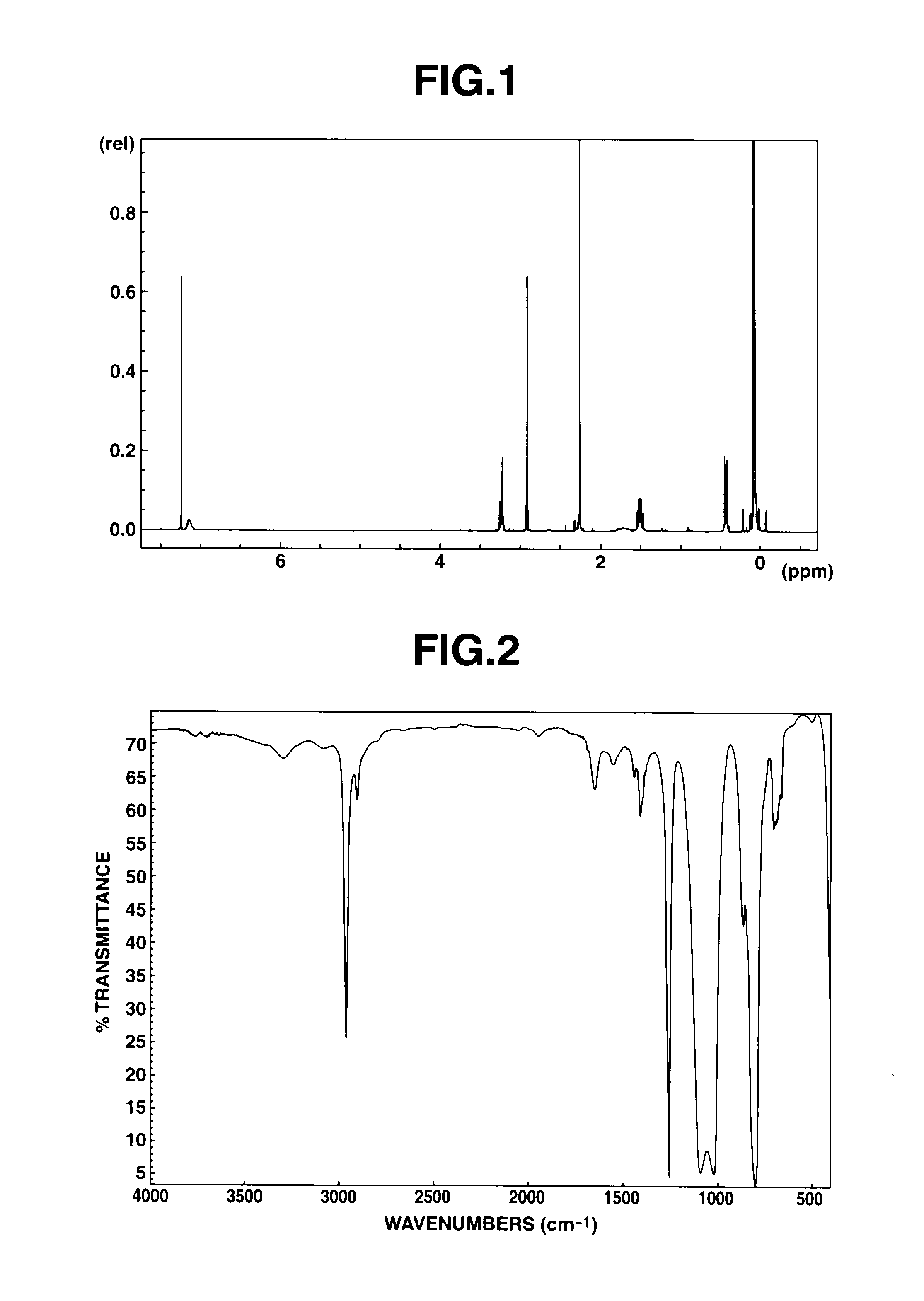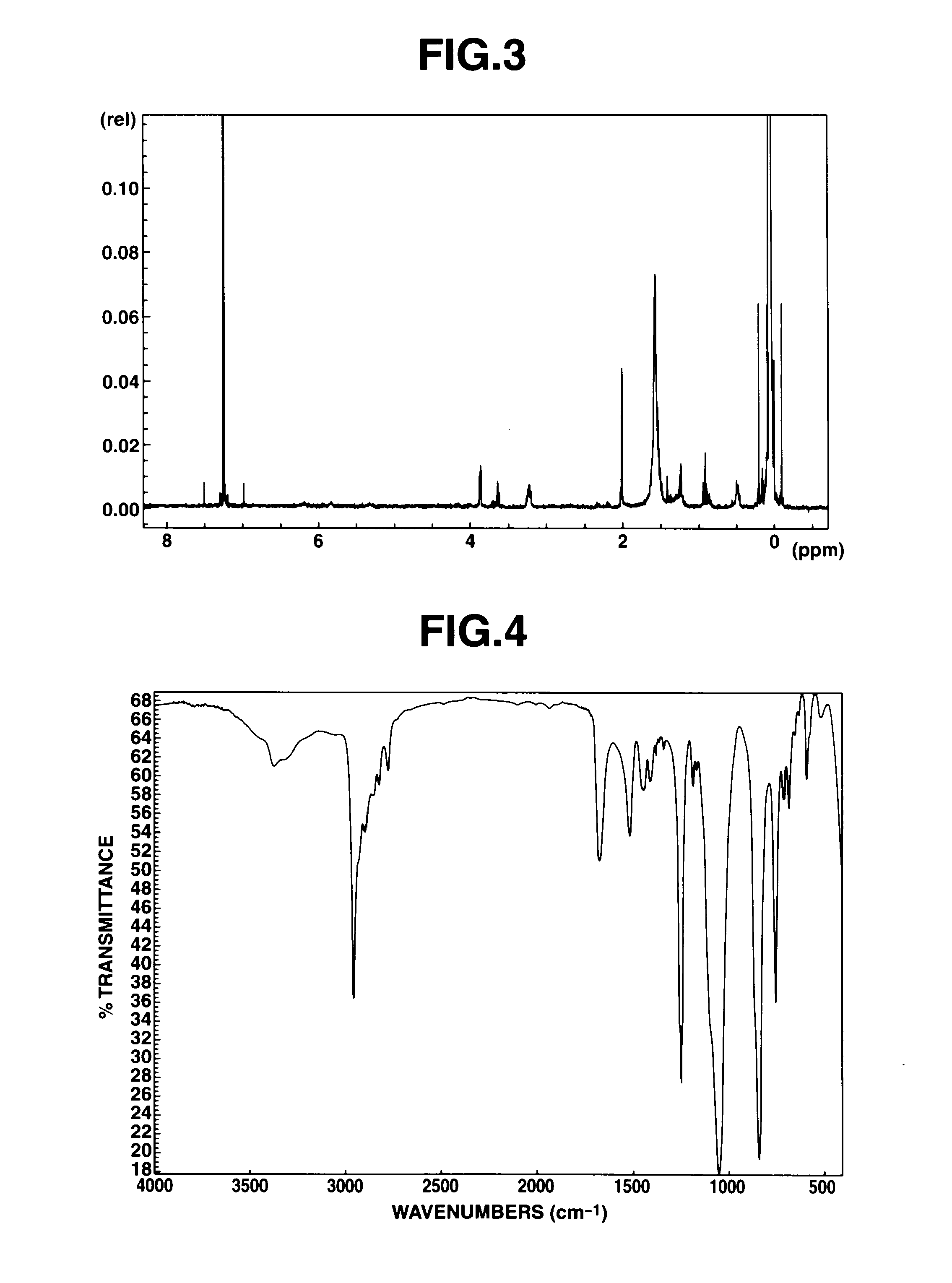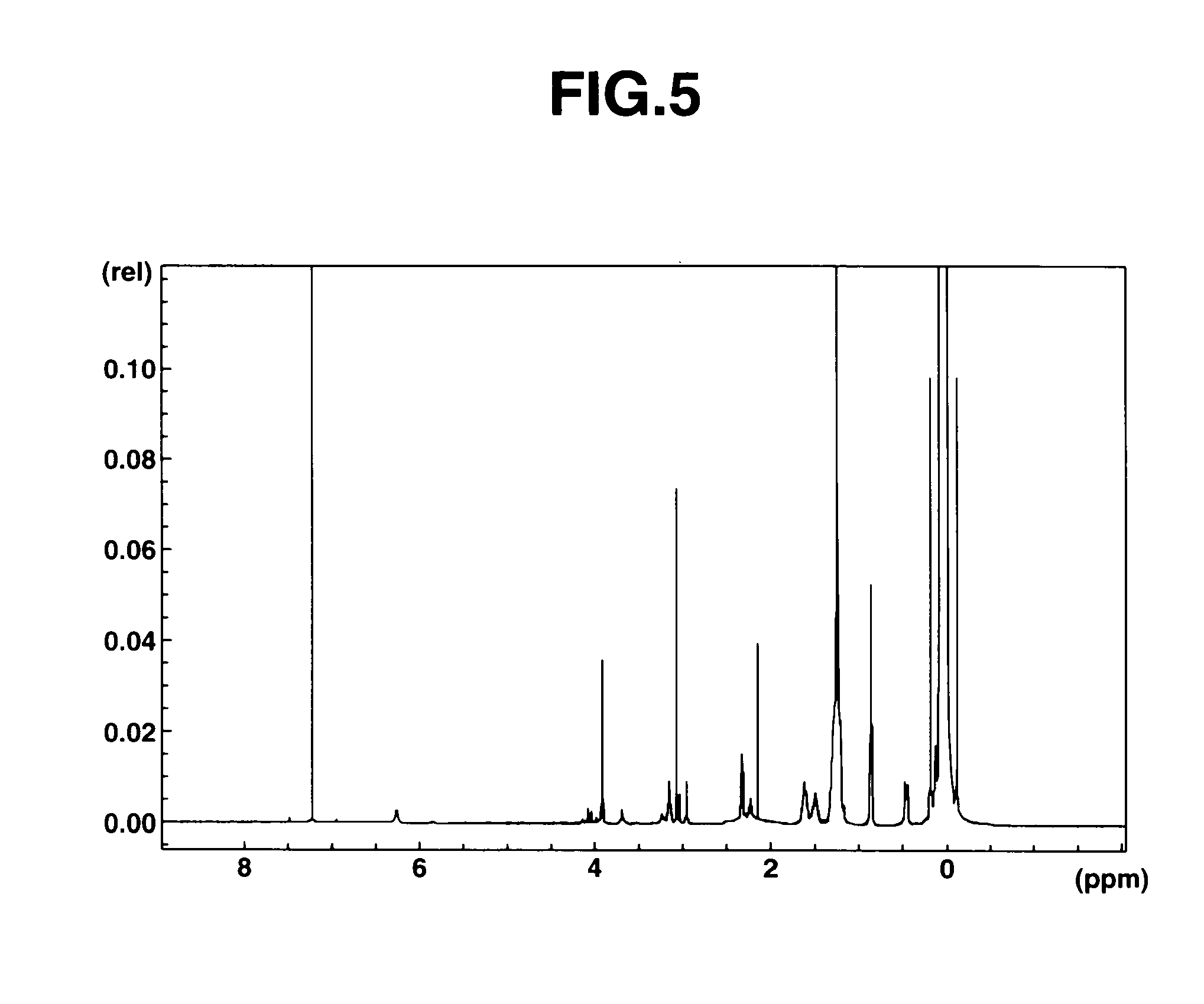Amino acid-modified organopolysiloxane, making method, and cosmetics
a technology of organopolysiloxane and amino acid modification, which is applied in the field of amino acid-modified organopolysiloxane, can solve the problems of unfavorable safety use of toxic compounds, difficult selectively obtaining amide compounds, and compounds that cannot be prepared in a simple way
- Summary
- Abstract
- Description
- Claims
- Application Information
AI Technical Summary
Benefits of technology
Problems solved by technology
Method used
Image
Examples
example 1
[0111]A reactor was charged with 80 parts of tris(trimethylsiloxy)silylpropylamine, 5 parts of titanium tetraisopropoxide, and 30 parts of N,N-dimethylglycine ethyl. The contents were stirred at 80° C. for 4 hours. The reaction mixture was stripped at 100° C. in vacuum, obtaining 105 parts of a pale yellow liquid in a yield of 96%. FIG. 1 shows the measurement results of 1H-NMR spectroscopy. The peak at 2.6 ppm assigned to the amine reactant extinguished and instead, the peak at approximately 3.1 ppm assigned to the amide bond formed was observed. FIG. 2 shows the measurement results of IR spectroscopy. The absorption peak at 1,680 cm−1 assigned to amide bond was observed, confirming that N,N-dimethylglycine ethyl was bound to tris(trimethylsiloxy)silylpropylamine.
example 2
[0112]A reactor was charged with 450 parts of a side chain aminopropylmethylsiloxane / dimethylsiloxane copolymer having an amine equivalent of 4,800 g / mol and a viscosity of 110 mm2 / sec at 25° C., 4 parts of titanium tetrabutoxide, and 14 parts of N-acetylglycine ethyl. The contents were stirred at 100° C. for 8 hours. The reaction mixture was stripped at 120° C. in vacuum, obtaining 430 parts of a pale yellow, faintly turbid liquid in a yield of 93%. FIG. 3 shows the measurement results of 1H-NMR spectroscopy. The peak at 2.6 ppm assigned to the amine reactant extinguished and instead, the peak at approximately 3.1 ppm assigned to the amide bond formed was observed. FIG. 4 shows the measurement results of IR spectroscopy. The absorption peak at 1,650 cm−1 assigned to amide bond was observed, confirming that N,N-dimethylglycine ethyl was bound to the aminopropyl-containing polysiloxane.
example 3
[0113]A reactor was charged with 300 parts of a side chain aminopropylmethylsiloxane / dimethylsiloxane copolymer having an amine equivalent of 6,800 g / mol and a viscosity of 1,800 mm2 / sec at 25° C., 8 parts of aluminum triisopropoxide, and 9 parts of N-benzoylglycine ethyl. The contents were stirred at 100° C. for 10 hours. The reaction mixture was stripped at 120° C. in vacuum, obtaining 290 parts of a pale yellow, faintly turbid, viscous liquid in a yield of 95%. In the 1H-NMR spectrum, the peak at 2.6 ppm assigned to the amine reactant extinguished and instead, the peak at approximately 3.1 ppm assigned to the amide bond formed was observed. In the IR spectrum, the absorption peak at 1,650 cm−1 assigned to amide bond was observed, confirming that N,N-benzoylglycine ethyl was bound to the aminopropyl-containing polysiloxane.
PUM
| Property | Measurement | Unit |
|---|---|---|
| temperature | aaaaa | aaaaa |
| pH | aaaaa | aaaaa |
| temperature | aaaaa | aaaaa |
Abstract
Description
Claims
Application Information
 Login to View More
Login to View More - R&D
- Intellectual Property
- Life Sciences
- Materials
- Tech Scout
- Unparalleled Data Quality
- Higher Quality Content
- 60% Fewer Hallucinations
Browse by: Latest US Patents, China's latest patents, Technical Efficacy Thesaurus, Application Domain, Technology Topic, Popular Technical Reports.
© 2025 PatSnap. All rights reserved.Legal|Privacy policy|Modern Slavery Act Transparency Statement|Sitemap|About US| Contact US: help@patsnap.com



